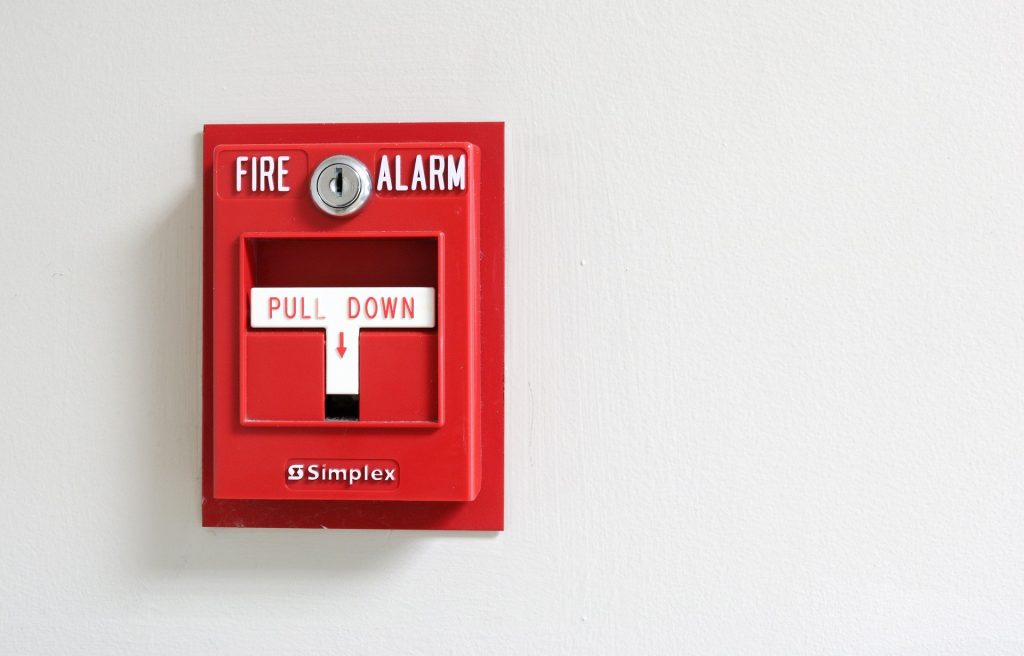A fire alarm system is a system designed to detect and alert people through visual and/or audible alarms in the event of a fire or other emergency.
The system is typically composed of several components including smoke detectors, heat detectors, alarm notification appliances such as bells or horns, and a fire alarm control panel which receives and processes signals from the detectors and triggers the alarms.
Fire alarm systems are an important component of building safety and are typically required by building codes and regulations.
Fire safety is a top priority in any building, and fire alarm systems play a crucial role in protecting occupants and property. These systems detect the early signs of fire and alert occupants, giving them the precious time needed to evacuate safely. In this blog post, we will explore the various components, design considerations, and best practices for fire alarm systems in buildings.
Components of Fire Alarm Systems
A typical fire alarm system consists of several key components that work together to detect fires and alert occupants:
-
Fire Alarm Control Panel (FACP): The FACP serves as the central hub of the fire alarm system, receiving signals from detectors and initiating alarms. It also monitors the status of the entire system and can provide important information to emergency responders.
-
Detectors: Fire detectors come in various types, including smoke detectors, heat detectors, and flame detectors. They detect the presence of smoke, abnormal heat, or flames, and send a signal to the FACP when a potential fire is detected.
-
Notification Appliances: These devices, such as horns, strobes, and speakers, are activated by the FACP to alert occupants of a fire. They produce audible and visual signals to ensure all building occupants are aware of the emergency.
-
Manual Pull Stations: Manual pull stations allow occupants to manually activate the fire alarm system in case of a fire. They are typically located near exits and in easily accessible locations throughout the building.
-
Fire Alarm Wiring: Wiring connects all the components of the fire alarm system, allowing them to communicate with the FACP and transmit signals throughout the building.
Design Considerations for Fire Alarm Systems
Designing an effective fire alarm system involves several key considerations:
-
Building Codes and Standards: Fire alarm systems must adhere to local building codes and national standards, such as the National Fire Code of Canada (NFC), which governs the design, installation, and maintenance of fire alarm systems.
-
System Type: Fire alarm systems can be designed as conventional, addressable, or hybrid systems. Conventional systems are simpler and more cost-effective but may be less flexible than addressable systems, which can pinpoint the exact location of a detector activation. Hybrid systems combine the features of both conventional and addressable systems.
-
Detector Placement: The strategic placement of fire detectors is crucial for early fire detection. Detectors should be installed in accordance with building codes and manufacturer guidelines, with special attention to high-risk areas such as kitchens, mechanical rooms, and storage areas.
-
Notification Appliance Coverage: Notification appliances should be distributed throughout the building to ensure all occupants can hear or see the alarm signals. The placement and sound levels of these devices must comply with building codes and standards.
-
Integration with Other Systems: Fire alarm systems can be integrated with other building systems, such as HVAC, elevators, and access control, to enhance overall safety. For example, the HVAC system can be programmed to shut down during a fire alarm to prevent the spread of smoke.
Best Practices for Fire Alarm Systems
To ensure the effectiveness and reliability of a fire alarm system, consider the following best practices:
-
Regular Maintenance and Inspection: Periodic maintenance and inspection of fire alarm systems are essential to ensure they remain in good working order. This includes testing detectors, notification appliances, and backup power supplies, as well as checking for any signs of damage or wear.
-
System Updates and Upgrades: As technology advances and building codes evolve, it’s important to update or upgrade fire alarm systems to ensure they meet current standards and provide the best protection possible.
-
Training and Awareness: Building occupants should be familiar with the fire alarm system and know how to respond

